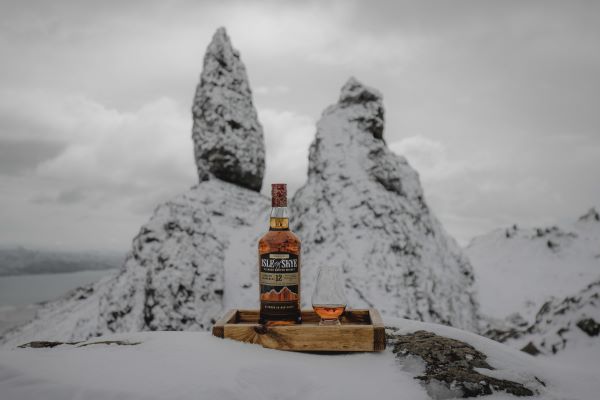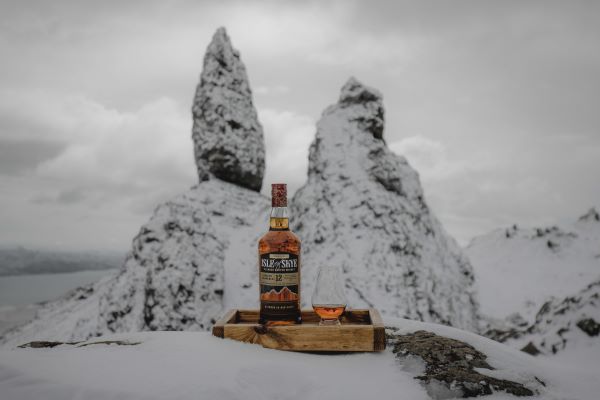Age Still Matters
Huge amounts of capital are tied up in ageing stocks of whisky with good reason. While age statements on labels come and go, demand for older malts and blends of 15, 18 years or more remains strong reports Tom Bruce-Gardyne
'Look for the Number – Know the Age – Know Whisky' decreed Chivas Brothers in its 'Age Matters' campaign in 2010, just as many of its rivals were busy erasing all mention of age on their bottles. The owners of these non-age statement (NAS) brands trumpeted their belief in maturity over a mere number, and how it helped unleash the creative genius of their whisky-makers.

"What it means is that you have greater scope and a bigger palette – like an artist, you have a broader canvas to play on," Ken Grier, then creative director at The Macallan, told me a few years later. The brand had recently launched its 1824 Series where names like Sienna and Gold replaced numbers. It was about selecting casks at their peak - "just like picking an apple off a tree when it's perfectly ripe and not on some given date," he explained
While it's not a bad analogy, one suspects the move to NAS whiskies was driven by a lack of aged stocks. Distillers had been caught out by demand, and hadn't been laying down enough whisky to maintain a core range of, say - 12, 15 and 18YO Scotch. With inventories now in better balance, those numbers have been coming back, while the likes of the '1824 Series' have been quietly dropped.

There was also something of a consumer backlash, particularly in Asian markets like Taiwan. At Ian Macleod Distillers, Pamela Stewart, brand manager for the Isle of Skye blend, says: "In markets like the UK people were a lot more accepting of non age-statements. While, there were other markets that were incredibly sceptical, and just didn't get it." The firm's marketing director, Iain Weir, adds: "In Asia, those tick boxes of taste, colour and age do matter. They're certainly a good guide or indicator of quality."
But age is more than a tick box in somewhere like China, where consumers appear to venerate older whiskies. "One thing they probably value more than anything else – something money can't buy – is time," says Iain. "In some ways they are trying to buy a bit of history." Compared to Cognac with its nebulous terms like VSOP and XXO (have a guess what that means – answer at the bottom), Scotch is simplicity itself. As he says: "The age statement is the youngest whisky in the bottle, so I think we're very transparent and honest."
Sandy Hyslop, director blending and inventory at Chivas Bros, reckons the above is often confused for an average age, and like many he believes more education is needed. When it comes to blends, his firm has a long-established expertise in older bottlings, from Royal Salute (minimum age - 21YO) to Chivas Regal, whose 25YO was first released in 1909.
"When whisky reaches the 15-21 years maturation mark the balance of distillate character and oak influence from top quality cask maturation can be very well aligned," he says. "On an extended maturation north of 21 years, the casks chosen for maturation are critical to achieving the final desired flavour."

The company bean counters must despair of such talk you would think, what with all that money tied up in stocks of whisky that is gently evaporating in the angel's share. But perhaps not given the premium from simply waiting an extra year. As John O'Keefe, Diageo president Asia Pacific, India and GTR, revealed last November, holding back the Singleton 12 YO to release as Singleton Golden Trésor 13YO, enabled the company to charge a hefty 40% more.
The rewards for patience at The Macallan are even greater. At the Whisky Exchange, the 12 YO Sherry Cask sells for £85.95. Wait six years and that jumps to £365 for the 18YO, while another seven years in the warehouse gives you £2,200. By the time you reach the 30YO, you're talking £4,650, which more than compensates for those greedy angels.
The same trajectory, albeit less steep, exists for other single malts which in turn is feeding the demand for well-aged blends. With Isle of Skye "we've always thought of it as the malt whisky drinker's blend," says Iain Weir who has no doubt consumers have been gravitating to its 18 and 21YO expressions as they have been priced out of malts of a similar age.
"In the secondary market people are beginning to respect blends in a way that has never happened before," says Isabel Graham-Yooll, founder of Wisgy. "Among whisky nerds, there's a huge trend in blends that are old and rare." Meanwhile, she points to an opposing trend in young, non age-statement malts from new distilleries.
"They're all using the same technology to get this really accelerated maturation," she says. "They taste good and are well-balanced, but you don't get that extra dimension and complexity that only time can give you." Provided, you have good quality wood, of course.
"At the moment there's a bulge in stocks of young whisky, and a shortage of old whisky, but that bulge is going to move along," she says. And once bottled, many of these older whiskies will carry a number. In her words: "It's a signpost, and particularly important if you are gifting. You know the person likes the 12YO, so you give them the 18YO as a special treat." Those buying on behalf of others want to cut to the chase, or as Chivas would have it 'Look for the number'

Award-winning drinks columnist and author Tom Bruce-Gardyne began his career in the wine trade, managing exports for a major Sicilian producer. Now freelance for 20 years, Tom has been a weekly columnist for The Herald and his books include The Scotch Whisky Book and most recently Scotch Whisky Treasures.
You can read more comment and analysis on the Scotch whisky industry by clicking on Whisky News.




